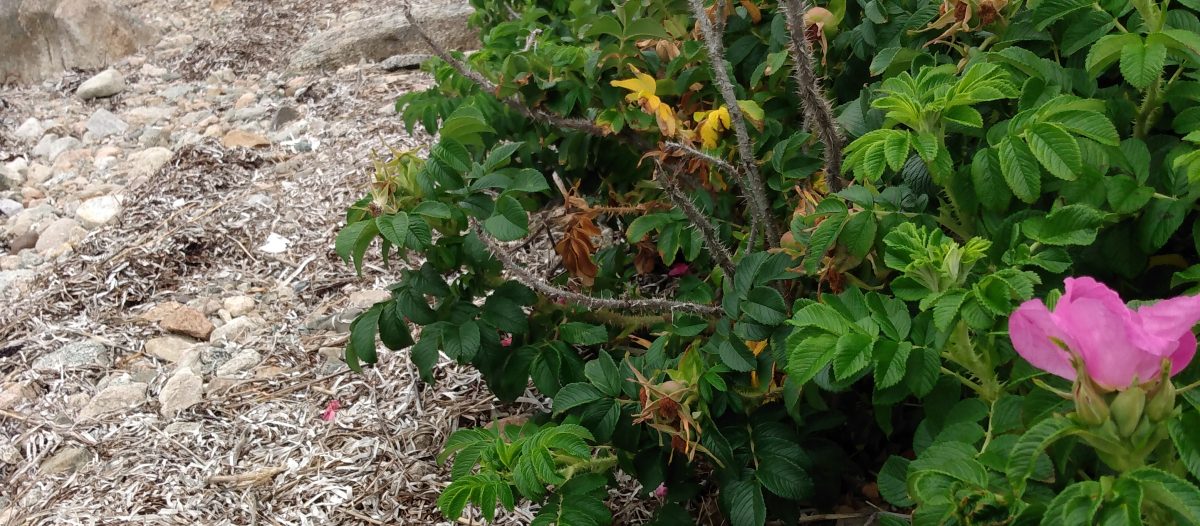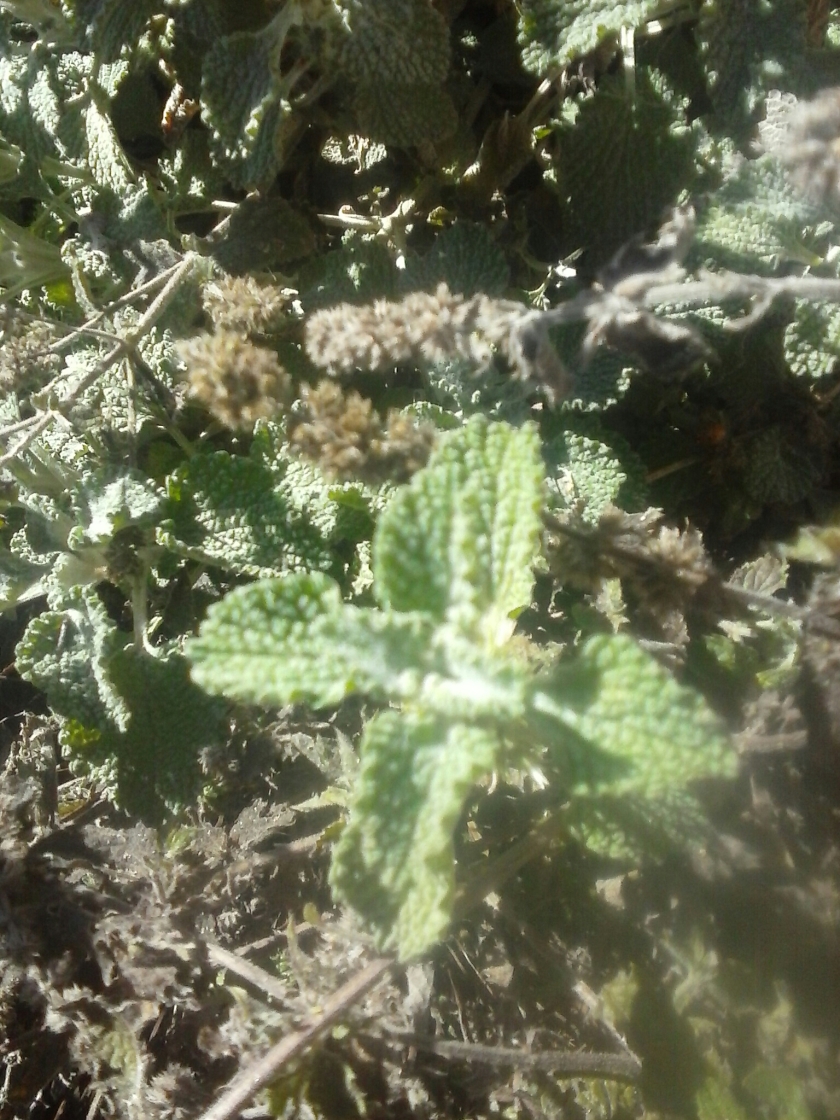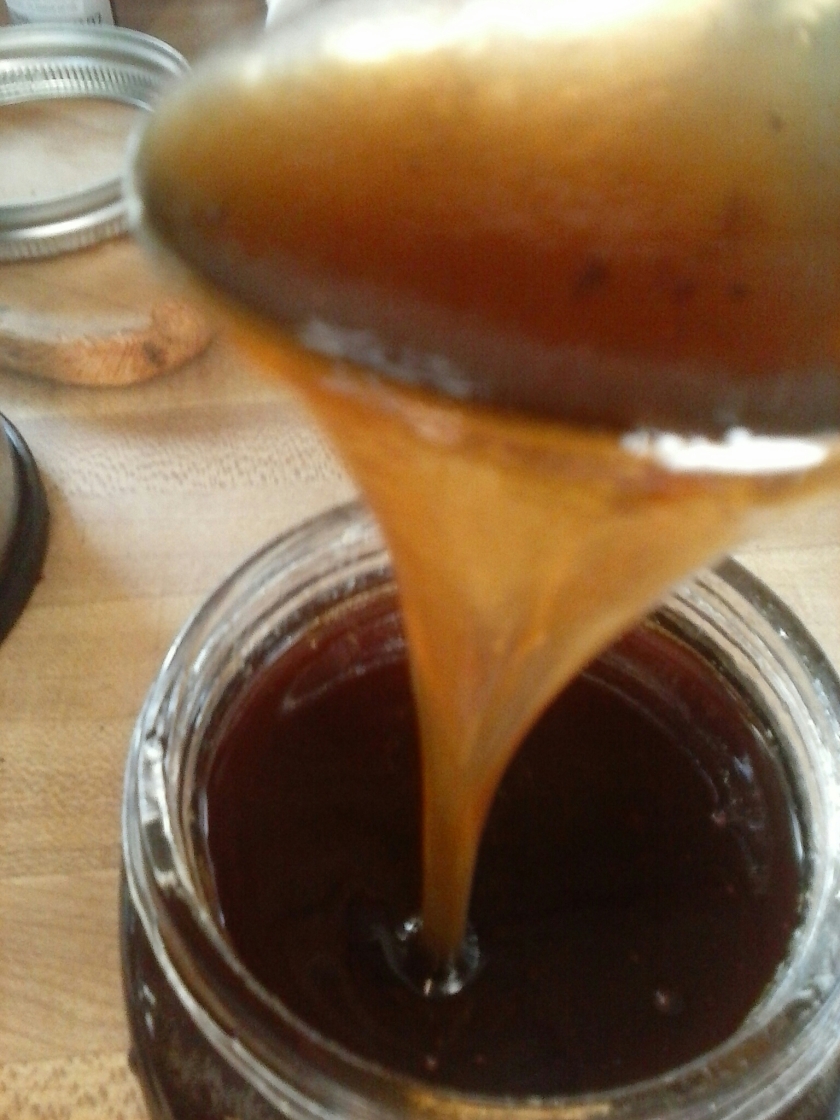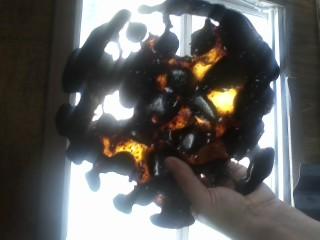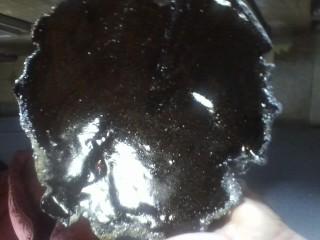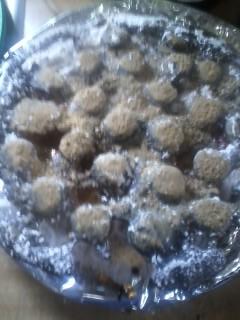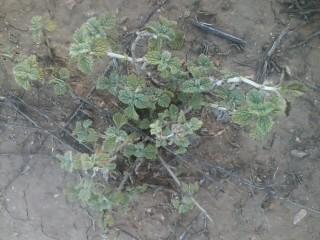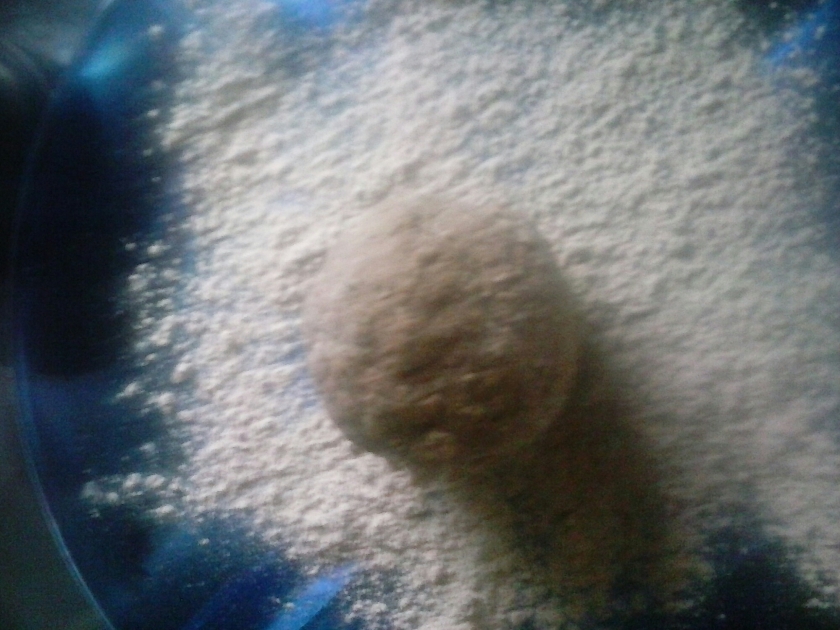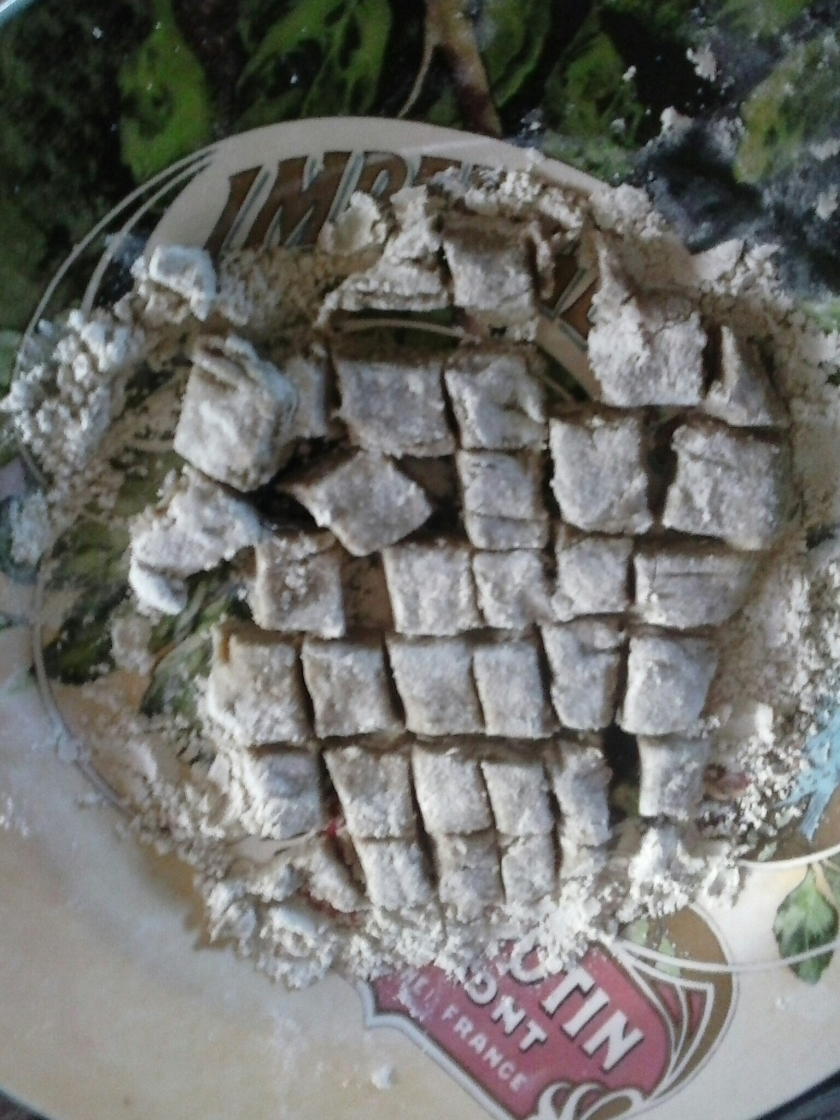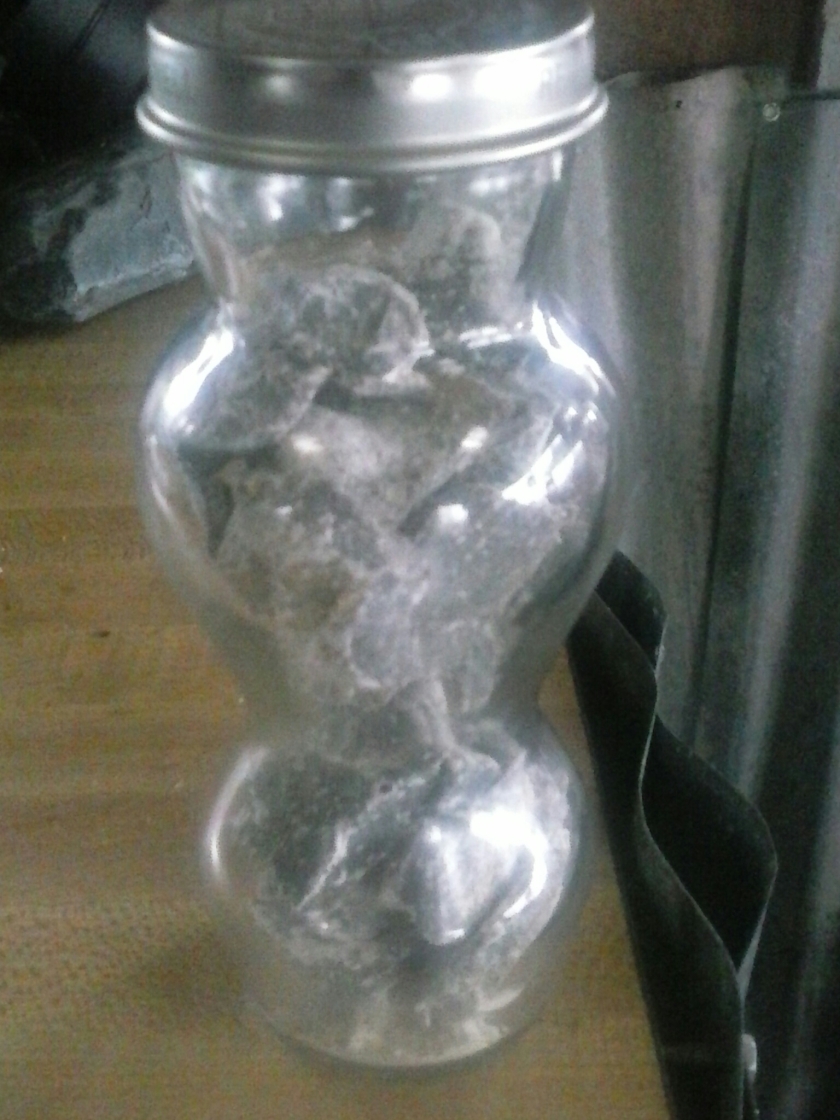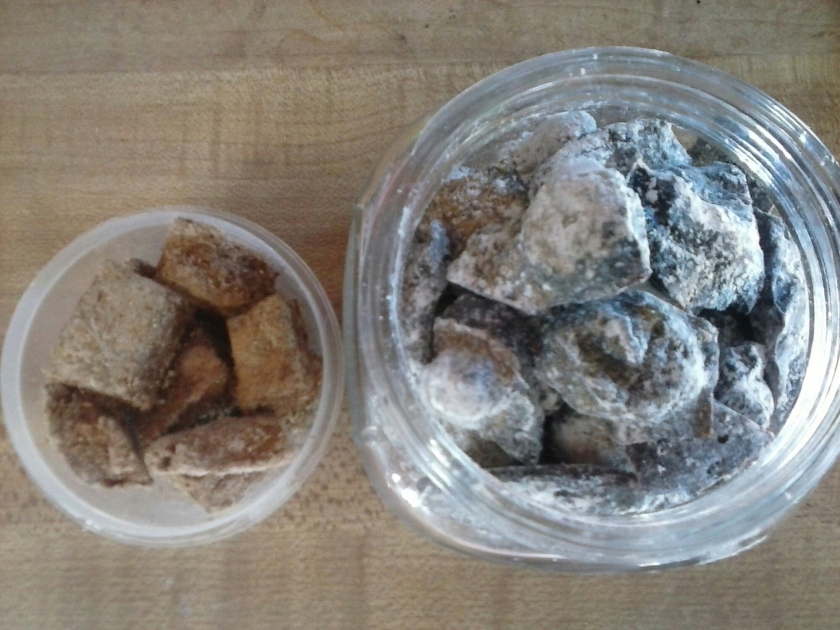Horehound
Marrubio vulgare
Family: Lamiaceae
It is fall and I deleted all my other horehound pictures. drat!
But, horehound is hearty. It has many green leaves still as well as sticky seed pods that orbit between leaf growth on stems. I have been picking up seeds, stuck on my clothes.
Horehound wants to grow other places and maybe I helped deliver some.
One of my favorite places to walk our dog, Fella, is here. Covered with patches of horehound. I have admired the plant for a few years in this beautiful locale, where it grows wild.
I knew it must be horehound although I think it looks less silvery than I have read described, and decidedly more frosted looking.
So, sometimes it takes time to decipher descriptions you read of a plant but, makes it all the more interesting a journey.
Horehound feels fuzzy, like wrinkled, crinkly velveteen. It has these beautiful, crenulate leaves, square stems and beautiful discs of seed pods.
And, it is in the mint family. Although more bitter than minty.
A good bitter for digestion.
I liked the taste though and would like to try horehound beer sometime. A traditional beer.
I always was curious about horehound candy as a child and on Western shows, children were sure to suck on a stick of hard candy, often horehound candy.
My grandmother, mother and aunts would get together around the holidays when I was growing up and make a type of rock or hard candy called beach glass candy. My mom grew up in an ocean town and I always enjoyed the baby food jars or other small jars filled with the bright, snipped bits of multicolored beach glass candy inside. All different flavors. yum.
My life is a little bit homesteading, off grid, work in an herbal shop and slowly I am teaching myself. All about plants, a bit of gardening, jelly and jam making, salt preserving food and bits of old time skills here and there.
I went through a sewing phase a few years back and would really love to find an old time Singer Sewing machine complete with treadle and hand wheel. The original off grid kind. 🙂
I’ve always been fascinated with candy making but haven’t done much. I’ve made chocolate truffles which were a blast and one batch of jelly tasted reminiscent of cotton candy. sugar, sugar sugar to bring it to gel.
But, horehound cough drops are my second attempt to make hard candy a.k.a. herbal candy…cough drops. The first time around I did not use a candy thermometer or the cold water test method so ended up with a taffy like syrup made with elderberries, which was frankly, delicious and gooey, but not hard candy. And, the second time was like a caramel! Maybe my thermometer was touching the side or bottom too much and the reading was off…
So hopefully, 3 times a charm!
With my second attempt, all that foam got downright daunting.
(I’ve read not to stir too much as air can get into the mixture and make it cloud over.) Maybe my pan was not deep enough or I stirred too much as it was foaming to the top so, I scooped some out at the syrup stage, all is not lost. The caramel or taffy consistency cough drops just don’t make it. But the cough syrup I scooped out of that batch is great.
Trial and error with herbs and candy. hard candy making…
guess they don’t call it hard candy for nothing! ha ha ☺
I have found and tried a simple, easy recipe that worked great.
I haven’t bought this much sugar, maybe ever but I had fun making hard candy. Herbal hard candy.
A cooking accomplishment for me.
It works best if you have a thick bottom pot. A thin bottom can scorch your sugar.
A greased baking tray is helpful.
Here is a fairly fool proof recipe:
and art piece ☺
Herbal Candy!
2 Cups white sugar
1/2 Cup strong herbal tea
1 ounce tincture (optional)
powdered sugar to coat candy when done (optional)
3/4 Cup light corn syrup.
A candy thermometer isn’t always foolproof but once I angled it and kept it off the bottom it worked best.
Cold water test:
Also drop mixture when you think it is done in some cold water. If it forms a hard ball it is done. It will be in thread form if not done.
Time to make the Candy a.k.a. cough drops if you like…
They taste good too, and, depending in what you add, room for creativity here!
Pour granulated sugar in pan
Add strained herbal tea and one ounce herbal tincture if you have it.
Whisk together off heat
Then turn on heat to medium using a thick bottomed pan if you can.
Add corn syrup, use wooden spoon
and stir too incorporate.
Don’t stir too much, lower heat if you need to to avoid scorching.
Angle thermometer to avoid hitting the bottom as this throws off the temperature…(yep)
listen to some good music 🎶…. wait a half hour or so, watch pot it can get foamy and unruly.
Eventually thermometer will rise to 300°
Some recipes say to bring it to 305°
but, I found 300° works better, so recommend that.
Add any food grade essential oils for flavor when temp reaches 275° fahrenheit. If adding color, add at this stage as well. Non toxic food coloring can be found too. Be careful of steam/reaction when adding essential oils or colors at these high temperatures. Some colors maintain better when removing heat at 290° but candy may be more sticky at this stage. I haven’t tried adding colors or essential oils since the cayenne, ginger and cinnamon added good flavor. And, I like the amber colored candy.
I tried transfering to a pyrex pitcher but the mixture hardened quickly off heat.
Yay! I broke the code but it was challenging. A helper would be good.
I made depressions in powdered sugar to act as a mold and also greased and lined a pan with a heap of powdered sugar too.
The powdered sugar also helps the mixture not to stick.
And it kind of worked. I broke the lozenges out of the thinner parts of candy. With the other pan I just broke the candy into bite size pieces. fun again!
Eventually I had more success pouring the mixture all at once instead of trying to fill each depression with the hot mixture.
That is where the greased baking tray would come in handy.
In the old fashioned way to break up hard candy, in about an hour just break it with the handle side of a butter knife.
Fun and satisfying.
Coat with powdered sugar by tossing it in a pan lined with the sugar or use a bag with powdered sugar in it and shake, if you want. It’s optional.
I mixed in powdered ginger too.
These cough drops…a.k.a. herbal candy contain many goodies….
grindelia, horehound and thyme tincture, and these herbs in the tea: red root, horehound, cayenne, cinnamon, ginger, thyme, and osha!
……………………………………………
sugar sugar sugar how about minus sugar recipes… here goes!
You can also make Sugarfree Lozenges!
Use slippery elm powder as the flour. Or marshmallow root powder. I wasn’t sure if marshmallow root powder would work but it worked great.
Slippery elm is on an herbal watchlist. Due to overharvesting and elm diseases.
An herbal friend has used Siberian Elm that worked well.
Look for cultivated Slippery elm or try marshmallow root powder. It worked well for me too.
Make an herbal tea, strain and
let the tea cool. Licorice tea or other herbs such as red root or osha would work well here.
Add enough tea to form a dough.
Mix and pat the dough into a ball.
Press or roll into shape.
Use small cookie cutters or a bottle cap or just cut strips into small pieces, lozenge size.
Dusted with powdered ginger, soothing to sore throats.
Slippery elm powder mixed with a strained herbal tea made from horehound, licorice, osha, red root.
Have fun with this! You can use the slippery elm as a method to mix lots of herbs.
Consider a happy mood lozenge.
Or a soothing tummy lozenge…
Possibilities are happily endless here.
Slippery elm, alone, has many health benefits: mucilage, soothing to gastric tissues, in combination with licorice can heal ulcers, helps heal mucous membranes -throat, etc.
Slippery elm lozenges are a fun activity to do with kids of all ages!
Try other herbal powders too!
This is the marshmallow root dough
And, the marshmallow lozenges cut into shape.
*A tip for drying lozenges. Mine molded. Even when dried for a few days. I recommend purified water, and drying on lowest setting of an oven til completely dry. Air dry first if you like.
Also honey or tiny amounts of stevia can be added to sweeten.
Lemon balm, elder berry and mints make nice flavor additions to counteract bitter herbs.
……………………………………………….
Hard Candy Cleanup Tips!
Clean up works best with very hot water. It dissolves the candy. Some people suggest adding vinegar to the hot water. Soap and a scrubby sponge helps. But hot water is the trick.
Careful not to immerse the thermometer into cold water after cooking with it, as it could break!
………………………………………………..
And the cough drops in a fun, recycled jar.
The herbal hard candy looks metallic but is a deep amber brown topped with powdered sugar and ginger.
They taste mildly spicey too. Not bad for medicine afterall.
And, horehound in a happy autumn field.
Fun with cough drops and lozenges, who knew?
